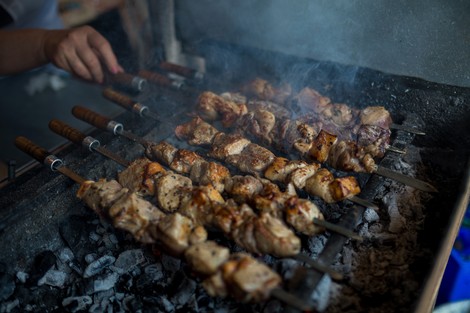Your podcast discovery platform
Curious minds select the most fascinating podcasts from around the world. Discover hand-piqd audio recommendations on your favorite topics.

piqer for: Globalization and politics Global finds
Neil Hauer is an independent analyst focused on Syria, Russia, and the Caucasus. Based in Tbilisi, Georgia, he served as senior intelligence analyst at The SecDev Group, an Ottawa-based geopolitical risk consultancy, for three years. He is presently engaged primarily on Russia’s role in the Syrian conflict.
What is Armenian Food? Depends on Who You Ask
The topic of diaspora identity, regional variations in a broader culture, and especially food are some of my favourite pet topics to read about. It's with this in mind that I've enthusiastically followed the writings of Liana Aghajanian, an Iran-born Armenian journalist based in California who focuses on the role of food in shaping and preserving national identity for diaspora groups, especially her own Armenian community. This piece offers some fascinating insights into the major distinctions between historic and contemporary (or Western and Eastern) Armenia as seen through the lens of cuisine.
The culinary differences between the two halves of the Armenian population are vast. Diaspora Armenians from southern California, the descendants of Armenian Genocide survivors from modern-day eastern Turkey, have little familiarity with the Russian-influenced cuisine of the Republic of Armenia. Similarly, Yerevan and Gyumri-born Armenians are left confused when faced with choreg, a sweet pastry integral to Western Armenian life but unknown in the Caucasus.
In Soviet times, as happened elsewhere through the USSR, cuisine in the Armenian Soviet Socialist Republic was simplified and standardized. Mass industrial production saw regional variations almost eliminated, and Russian dishes become widespread.
In recent decades, however, an influx of the Armenian diaspora returning to their homeland (or the present version of it) has revitalized the nation's cuisine. A Soviet repatriation effort following WWII was followed by more Armenian refugees fleeing turmoil in Lebanon and Iran, as well as some US residents. Most recently, a wave of some 30,000 Armenians from Aleppo, Syria has led to yet another culinary revolution in Yerevan.
The constant flux of Armenian culture and identity as influenced by the sacrosanct dishes of different segments of the community is a fascinating and heartwarming topic. This piece is a great introduction to the cuisine of Armenia and Liana's other writings.
Stay up to date – with a newsletter from your channel on Global finds.
